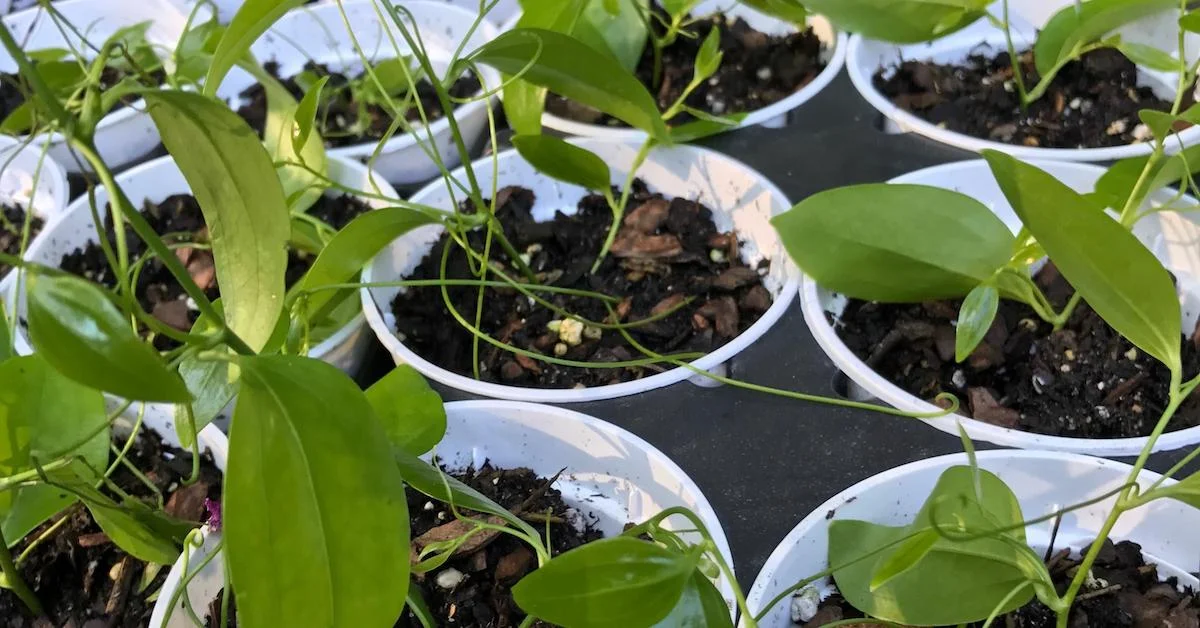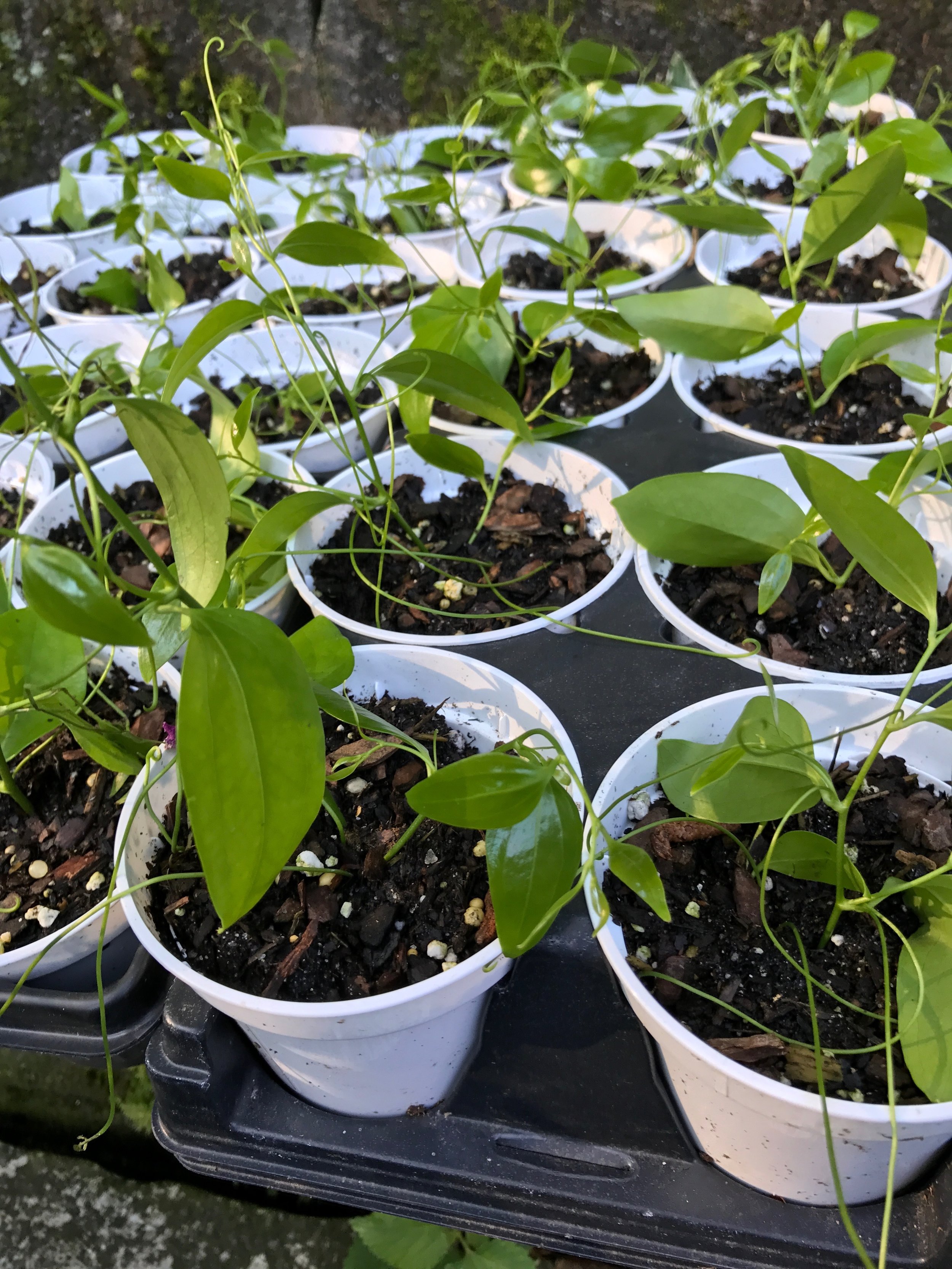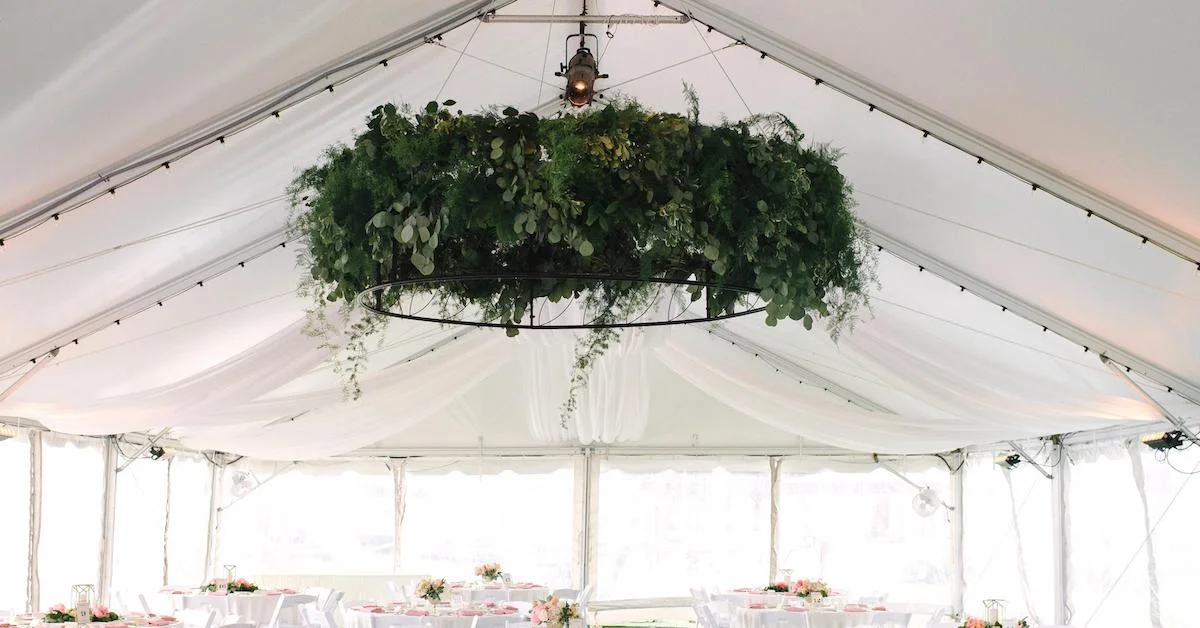Microfarming in Every Season: One Farmer’s Advice
Hello, fellow flower farmers and floral enthusiasts! My name is Kelly Wood. I am the owner of Grace Gardens Urban Flower Farm in Birmingham, Alabama, and I’m here to share with you about microfarming in every season.
I am considered a “microfarm” as my farming operation exists on less than five acres. Actually, it is a “micro-micro farm” in that my entire farm occupies less than two acres. It surrounds my urban homestead, and it’s essentially a giant home garden. I converted the space to a microfarm to augment my floral design business and add beauty and refuge for wildlife, and it turned into a commercial cut flower and foliage farm supplying floral designers in my area. I still love my garden as a haven for my family and me and as a welcoming spot for all the pollinators and wildlife that visit me every day!
In the six years that I have been microfarming, my purpose, vision, and layout have changed dramatically! In the beginning, my beds were filled with the perennials and annuals that I was unable to purchase locally for my floral designs. As I progressed, I began to realize that the things that I was growing for myself weren’t available to other local designers, either. We had no flower farmers! I made the BIG decision to stop my work as a floral designer and concentrate on growing flowers for others and—perhaps, more importantly—encouraging others to grow, too!
My business encompasses microfarming for every season. Every plant, shrub, and tree in my landscape is planted with future sales in mind. I am usually asked the same questions when people come to visit (after quizzically scratching their chins and asking me, where the “farm” is). The questions usually involve how I decide what to grow, when and how it is planted, and how I harvest and sell my product.
I choose my plants with a few important things in mind:
It has to grow in my growing zone;
It has to be both something that I love and appeals to the buyer; and
It has to enhance the overall habitat of the people and animals that live within it.
I live in zone 7B/8 and can grow something just about year-round. I typically use only natural practices and produce a lot of my own compost. I choose plants that grow well where I garden and plant them where they will receive the conditions they need to thrive. In a small garden, there will be places in your yard where different plants do best. I always research everything that I can about a plant before planting it, but nothing gives you more information than living with a plant and observing it. It might do well in one area of your garden but die in another, even if you are following instructions for its care perfectly. My advice is to start small when trying out new plants and don’t be afraid to make mistakes. What you learn will be irreplaceable.
In small gardens, you will have to be judicious in determining the number of varieties of plants you grow. You simply don’t have the room! If you are growing for markets, you can manage a little bit of a lot, enough to make up cute bouquets to sell. If you are selling to designers, decide what you will grow by asking your clients what they use most and of those determine what will work well for you. Consider growing more abundant crops of flowers and foliage that are more valuable. In the end, the choice is yours! If you grow beautiful flowers that you love, your enthusiasm will show in your sales! As always, don’t forget the “beasts of the field!" Taking a few minutes to watch hummingbirds flit from flower to flower will soothe even the most tired farmer’s back!
Because of the limited space, my crop rotation is pretty basic. I grow all my perennials, bulbs, and shrubbery in their own beds that are found all over my property. They are rarely changed, except to divide older plants, and are amended with compost, weeded, and mulched as needed. They provide a changing succession of blooms throughout the season. I grow roses in a bed unto themselves. I tried mixing them in with other plants for years with not much success.
The dahlias grow in the same spot every year. I recommend a soil test before planting them, and this year plan to delay planting the tubers. Dahlia tubers are lifted each fall, stored, and replanted when the soil warms in the spring. They bloom best in the fall, so a delayed planting might save me the headache of babying them through the hot weather they hate. I’ll let you know how that goes!
During the growing season, we harvest on Tuesdays and Thursdays. It is a discipline to cut your flowers every two days (and on weekends, too, if needed) Cutting keeps the plants producing. I also leave flowers for birds, butterflies, bees, and wasps. Their presence in my garden helps me monitor the health of my garden environment. An email is sent out on Sundays to a list of interested buyers and includes a list of everything that is blooming, how much there is, and the cost. I don’t take orders for events too far in the future. My farm is small, and you never know what might affect a harvest. I am happy to say that this works just fine! If I have a lot of extra product, I can spend an afternoon peddling around the park with my flower vending bike or sell the excess to our local wholesaler.
Summer
I plant to have something available every season. I do step back in the hottest of months, but the lisianthus, zinnias, celosia, sunflowers, and so many more are just hitting their stride! I even have roses that bloom for me all season. I keep a good cutting schedule but choose those particular heat-loving plants which require the least human input to thrive (mulch, compost, and a good irrigation plan will be your best friend)!
Spring
Early spring erupts in glorious bloom right at the time people are clamoring for flowers! (Many thanks to Lisa Mason Ziegler for teaching us the value of cold-hardy annuals.) Plant those puppies in the autumn and reap the benefit early in the year. Bulbs, flowering shrubs, and early greenery can round out your spring offerings. Lilies, daffodils, tulips, hyacinths, and so many more bulbs can be planted in the fall and thrive in areas that get sun early in the growing year. I also rely on a changing parade of perennial flowers and herbs. Peonies, hydrangeas, deutzia, weigelia, flowering peach and apple branches, winter jasmine, and Lady Banks roses add so much to the spring cutting garden! My perennials are planted in the fall (if new), and the herbs are started in my tiny greenhouse at the beginning of the year to be planted out about the same time as zinnias. As soon as the weather hits 80 degrees, the hardy spring annuals are pulled and added to the compost heap; their beds are then amended with several inches of compost in preparation for their new summer inhabitants. The summer annuals—most started as seeds in the greenhouse but some ordered as tiny flower plugs—are planted where the spring flowers were.
Autumn
In the late summer, the seeds for next springs flowers have been started in a cool greenhouse or even inside the house. They are planted out into the long, raised, stationary beds that hold flowers all summer. The first frost sends the summer flowers to the compost, signals the lifting of the dahlias, and the adding of fertilizer and amendments to the beds to ready them for planting the cold hardy annuals. The tiny plants hang out there all winter developing strong roots. In early spring they grow into beauties!
Winter
This leads to the last season of my year, and this season is simple—a true gift from Mother Nature! My property is ripe with many beautiful evergreens. Magnolia, Holly, Juniper, Cedar, Pine, Mahonia, Nandina, and Hemlock, provide me with a vast array of leaves, berries, and cones to decorate homes, make wreaths, and create holiday arrangements for clients ( I couldn’t completely walk away from designing!).
Although I am a tiny farm, I was able to receive the first “American Grown Flower Farmer” certification in Alabama. Microfarming is a legitimate way to bring quality, local blooms to your community. And I love what I do! The only thing I love even more than growing flowers is encouraging others to grow! We have few local flower options in our area now, but that is changing. Every farm is different, as is each grower. I encourage everyone to grow—even event florists. Design your farm to reflect you and what you have. You don’t have to wait for the perfect location. The variety of flowers that can be grown locally, the colors, the scents, the positive environmental impact we have, all of these things are joys that locally grown flowers provide.
I always say, “Flowers make people happy!” Be happy! Grow with us!












